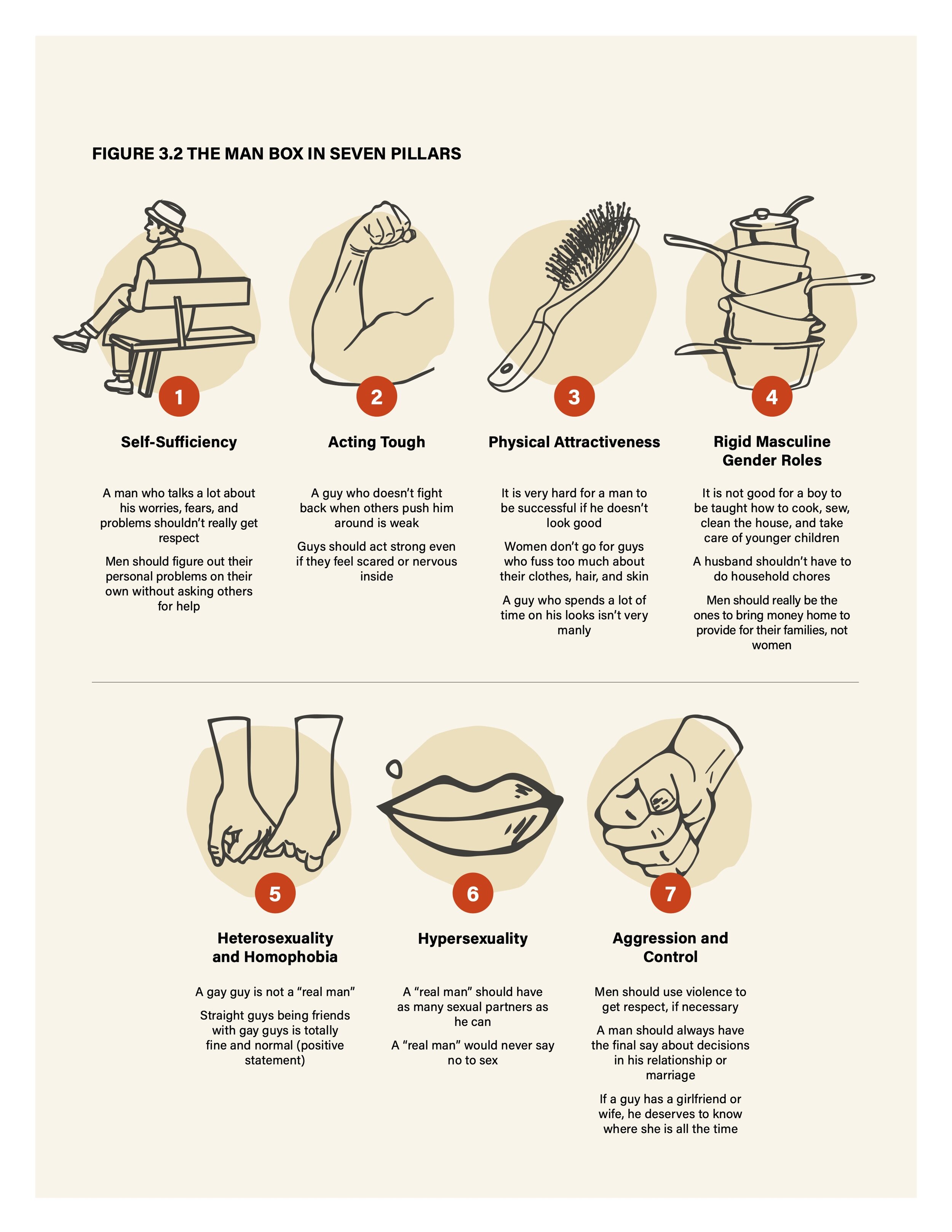Deconstructing the Man Box
Graphic by Promundo
By Jonathon Reed
This is an excerpt from Raising Next Gen Men, our online course on the theory and practice of engaging with boys and young men on topics like mental health, healthy relationships and positive masculinity.
I had just finished an activity and discussion on the Man Box with a group of seventh- and eighth-grade boys. One of them was just sitting with his arms crossed, staring at the chart paper that we had filled up with our brainstorm. “Cole,” I said. He looked at me. “You look like you have something to say.”
His gaze shifted back to the drawing of the Man Box. “It’s just so dumb,” he said eventually. “None of this is actually true.” I asked what he meant by that. “Look, boys can wear pink, boys aren’t all into sports, boys do cry. It’s just a bunch of bullshit.” He paused. “Sorry about swearing.”
Cole’s response in that moment showed me one of the valuable things about using the Man Box in programming with boys and young men—it makes the invisible visible. We often use it as a way to understand the ways that traditional norms of masculinity constrict how boys and men are allowed to act and express themselves.
So what is the Man Box?
The concept originated with Paul Kivel and the Oakland Men’s Project in the 1980s, and was further developed by Tony Porter and A Call to Men. It is such an apt way for boys and men to visualize their experiences of masculinity that it remains a staple of masculinity programming today. At Next Gen Men, we use it at the start of many of our programs to help boys explore their experiences with masculinity.
We ask the boys to think about masculinity, common media representations or the ‘coolest guy in school,’ and brainstorm what characteristics and behaviours are typically expected—or not allowed—within those stereotypes. The Man Box is essentially the code of behaviours and characteristics traditionally expected of boys and men: things like being tough, dominant and heterosexual. For example, boys are implicitly and explicitly discouraged from emotionally expressing themselves, being vulnerable or effeminate, because those behaviours fall outside of the box and therefore aren’t acceptable.
The Man Box Discussion Questions
What does a ‘manly’ man look like?
- What are the characteristics of an ideal male body?
- How are boys expected to dress? What kinds of clothing are too feminine?
- What toys are boys supposed to play with?
- What hobbies and interests are acceptable for boys? What would they get made fun of for?
- What feelings are boys supposed to have?
- How are men expected to express themselves?
- Who are boys and men supposed to be attracted to?
- How do men typically talk together about dating and relationships?
The Man Box creates a rare opportunity for boys like Cole to look more deeply at the cultural expectations of manhood around them.
But that’s not all.
For parents and educators, the Man Box is the foundation for a transformative insight into the risks associated with trying to fit in with the norms of manhood. It’s a critical piece of knowledge for anyone who works with youth.
Get it by taking the Raising Next Gen Men online course.
Written by Next Gen Men Program Manager Jonathon Reed as part of Learnings & Unlearnings, a bi-weekly blog reflecting on our experiences working with boys and young men. Subscribe to NGM’s weekly newsletter, Voice Male Weekly, to get Learnings & Unlearnings delivered to your email inbox.

